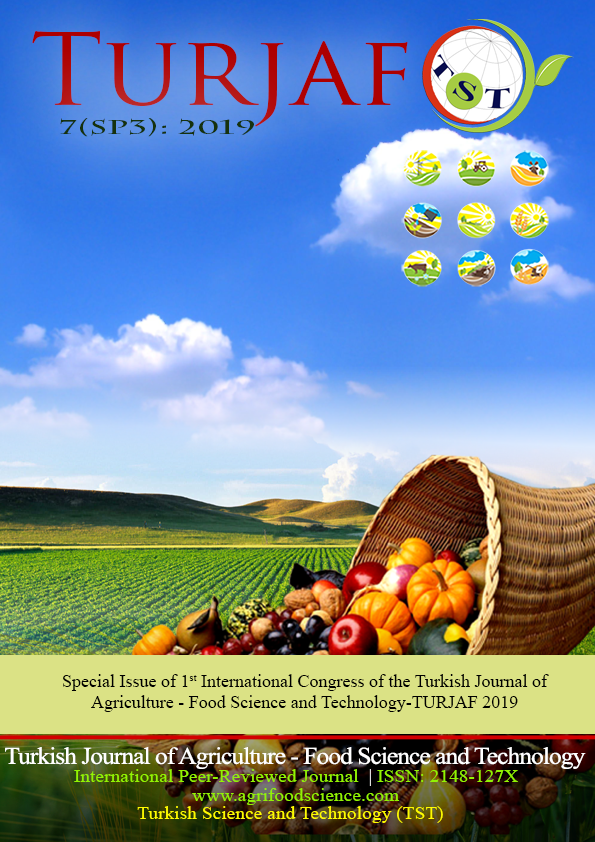Exogenous Salicylic Acid Applications as an Example of Molecules Effective in Abiotic Stress Tolerance in Plants
DOI:
https://doi.org/10.24925/turjaf.v7isp3.5-10.3086Keywords:
Abiotic stress, Exogenous applications, Salicylic acid, Signal transduction, ToleranceAbstract
Plant growth and development, which is associated with endogenous and exogenous factors, is greatly affected by abiotic stress factors such as drought, salt, high and low temperature, radiation and heavy metals. Coping with stress in plants takes place by making changes in cell metabolism under adverse conditions and activating defence mechanisms. Salicylic acid (SA) is one of the molecules that activate these mechanisms in plants and it is an internal plant growth regulator which is especially effective in responding to pathogen attacks. SA, which is a phenolic compound and also known as a plant hormone, acts as a signalling molecule under stress conditions and regulates the response of the plant under stress conditions and ensures its survival. It is known that especially exogenous SA applications provide resistance by activating pathogenicity-related genes in plants. There are many studies showing that externally applied SA increases plant resistance against abiotic stress factors as well as biotic stress factors. Exogenous SA applications were researched in different plants such as tomato, pepper, corn, maize and bean and it was found to be effective in forming resistance for salt, high and low temperature, drought and heavy metal stresses. However, some studies have shown that exogenous SA applications have inhibitory properties in some vegetative and biochemical contents of some plant species. It is concluded that the effects of SA may vary depending on the application dose, plant species and the mode of application.Downloads
Published
28.12.2019
How to Cite
Nasırcılar, A. G., Ulukapı, K., & Şener, S. (2019). Exogenous Salicylic Acid Applications as an Example of Molecules Effective in Abiotic Stress Tolerance in Plants. Turkish Journal of Agriculture - Food Science and Technology, 7(sp3), 5–10. https://doi.org/10.24925/turjaf.v7isp3.5-10.3086
Issue
Section
Review Articles
License
This work is licensed under a Creative Commons Attribution-NonCommercial 4.0 International License.

























